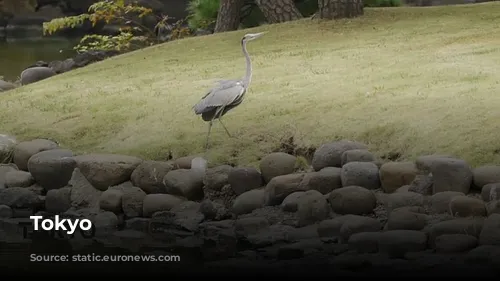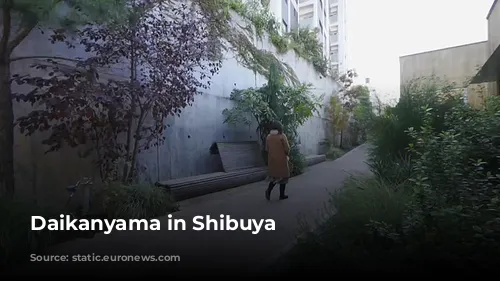Imagine a city known for its towering skyscrapers and futuristic design, yet one that also boasts stunning green spaces, rooftop gardens, and serene parks. This is the unique charm of Tokyo, a metropolis that’s redefining the meaning of urban living.
A City Built on Resilience and Green Dreams
Tokyo’s story is one of remarkable resilience. The city, once ravaged by devastating air raids during World War II, rose from the ashes, rebuilding itself into a vibrant metropolis. Today, Tokyo is renowned not just for its technological marvels, but also for its commitment to nature. Despite its dense population and limited space, the city has embraced a green vision, transforming itself into a haven for nature lovers.
A City Embracing Its Green Needs
Tokyo is a bustling metropolis with a population of 13.9 million, making it one of the most densely populated cities in the world. Every inch of space is utilized for urban living. However, despite the limited space, Tokyo’s local authorities have consistently encouraged nature to flourish within the city.
The Meguro Sky Garden, an urban oasis perched 35 meters above street level, is a testament to this green vision. Situated atop the intersection of two major motorways, this garden boasts thousands of trees, vibrant play areas, a flourishing vegetable patch, and a traditional Japanese garden. It’s a breathtaking example of how nature can thrive even in the heart of a concrete jungle.
Green Spaces: A Haven for Nature and People
Green spaces in Tokyo serve a dual purpose: they are both environmental sanctuaries and recreational havens. They play a crucial role in safeguarding the environment while providing city dwellers with a welcoming escape from the urban hustle. These green spaces also serve as refuge parks in case of natural disasters, ensuring the safety of the city’s residents.
Kazuhiko Aoyama, Director of Greenery Policy Planning and Coordination for the Tokyo Metropolitan Government, emphasizes the city’s commitment to green spaces. “The greenery of the Tokyo Metropolitan Area comprises about 52% of the total area,” he explains. This includes 24% of the 23 wards. Tokyo actively promotes the creation of green areas between buildings and has implemented policies to increase their number, demonstrating its unwavering dedication to urban greening.

A Journey Through Time: From Edo to Modern Tokyo
The history of Tokyo is intricately interwoven with its appreciation for nature. During the Tokugawa period (early 17th to late 19th century), when Tokyo was known as Edo, green spaces were highly valued by its inhabitants.
The Hamarikyu Gardens, located in the heart of Tokyo, stand as a testament to this historical connection with nature. These gardens, some of Tokyo’s oldest feudal gardens, are nestled beside the Sumida River and Tokyo Bay. Sek Jia Ho, a guide at the gardens, shares a glimpse into their rich history: “The garden was built over 360 years ago, owned by the Tokugawa shogunate, and primarily served as a second residence.”
The remains of Edo Castle, after the shogunate and the Meiji Restoration, were transformed into the Imperial Palace. In 1946, it was gifted to the Metropolitan Government of Tokyo.
The Hamarikyu Gardens have weathered the storms of time, enduring significant damage during World War II. Their tea house, dating back to 1707, was destroyed by fire and rebuilt in the 1980s. This was once a place where feudal lords sought respite, enjoying refreshments and fishing. Today, these gardens offer everyone the opportunity to explore 25 hectares of formal gardens, meandering pathways, elegant buildings, and brackish waters.
A Unique Haven: Hamarikyu Gardens
The Hamarikyu Gardens stand out for their seawater ponds, a unique feature within Tokyo. These ponds attract a diverse array of marine life, including Japanese Black Porgies, flathead grey mullets, and red stingrays. The gardens also boast two out of only five nationwide duck hunting sites, showcasing their rich biodiversity.
Reimagining Urban Spaces: Log Road Daikanyama
Tokyo’s commitment to green spaces extends beyond its historical gardens. The city embraces innovative solutions to integrate nature into its urban landscape. Log Road Daikanyama, located in the trendy Shibuya district, is a prime example of this forward-thinking approach.
This public space and leisure destination is built on the site of a former Tokyu railway line, demonstrating how even disused infrastructure can be transformed into a vibrant green space. Tomotsuna Sasaki, a manager at Log Road Daikanyama, explains the vision behind this project: “We wanted a place where everyone could enjoy coming at any time of the day and whatever the season. We paid close attention to adapting to the area, giving it a local feel. We used the former rail tracks to create a walking path, connecting the community with nature.”
The planners of Log Road Daikanyama carefully considered the needs of both locals and visitors, creating a venue that seamlessly blends shops, restaurants, and cafes with welcoming benches and public spaces. The selection of trees and vegetation further enhances this green haven, providing opportunities for social interaction and relaxation in a serene setting.
A City Where Nature and Urban Life Coexist
Tokyo’s green spaces offer a much-needed respite from the frenetic pace of urban life. These havens of calm provide residents and visitors alike with a chance to reconnect with nature, breathe fresh air, and find tranquility amidst the bustling city. Tokyo is a living testament to how urban spaces can flourish when they embrace the power of nature.


